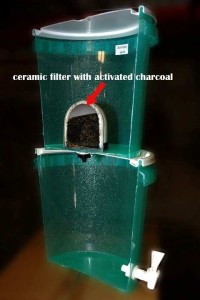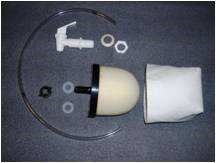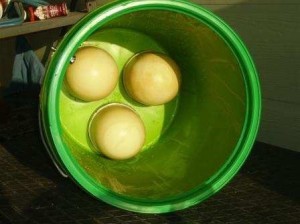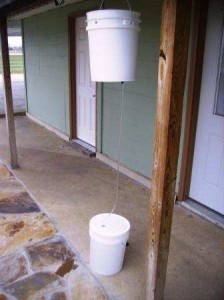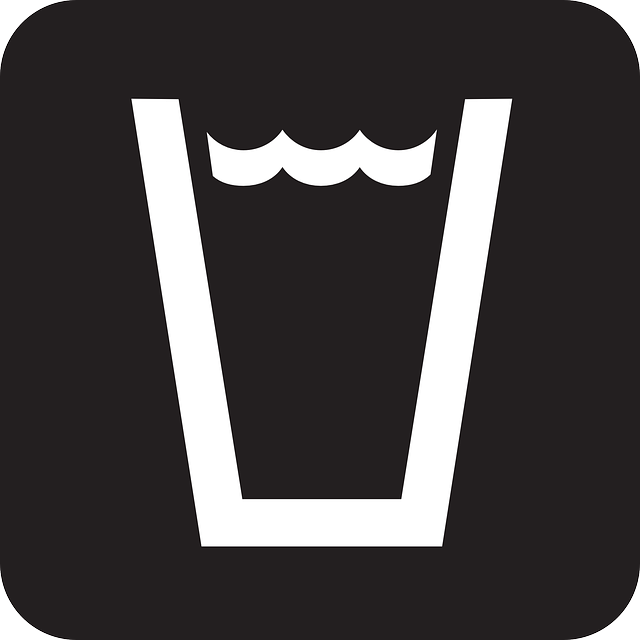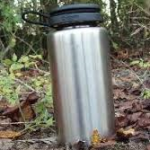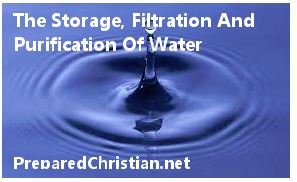
It has been some time since I covered water purification, so I thought it was due. Water is probably the most important of the five basic human needs (water, food, shelter, energy and security) that will be taxed in a disaster scenario.
After the earthquake in Haiti, far too many people died from Cholera because of dirty water supplies. You might be thinking that their supply wasn’t the greatest to begin with. Think back to Katrina. The flooding was so bad that the water supply wasn’t safe. I believe it was Budweiser who shut down a plant and started bottling water to send to victims.
I’ll list all of the ways I know of, with their pluses and minuses, to purify water. If you can think of others, please add them to the comment section.
Purifiers
Out of all other methods, a water purifier is the only method that will not only kill bacteria and viruses, but will remove chemicals as well.
There are several styles of purifiers, and they are not all created equal. I cover many of them in Types of Water Purifiers and Their Applications. There are some filters that are marketed as purifiers. The difference is that filters filter out bacteria and cysts but not viruses. Purifiers filter out bacteria, cysts and viruses, as well as chemicals, prescription meds and on and on.
I recommend a ceramic water purifier and believe them to be the top of the line in terms of purification. Homespun Filters sells these types of filters at a far reduced cost ($33 for a US made filter kit) than you will find anywhere else. They’re able to do so because they sell kits so you can make your own water purifier.
I personally believe that a purifier should be the primary means of water purification. But as the motto states; “Two is one, and one is none”, knowing other methods, and having redundant purification is a good idea.
Bleach
Bleach is cheap, easy to store and will leave your insides whiter! If you use this method, make sure to use unscented bleach. Bleach will kill pathogens, but doesn’t filter out debris or chemicals.
1. Use bleach that does not have an added scent (like lemon).
2. Add 1/8 teaspoon (8 drops or about 0.75 milliliters) of household liquid bleach to 1 gallon (16 cups) of water.
3. Mix well and wait 30 minutes or more before drinking.
If water is cloudy:
1. Use bleach that does not have an added scent (like lemon).
2. Add 1/4 teaspoon (16 drops or 1.5 milliliters) of household liquid bleach to 1 gallon (16 cups) of water.
3. Mix well and wait 30 minutes or more before drinking.
My biggest problem with this method is that you’re drinking bleach. I know it is diluted, but it is still bleach. Don’t get me wrong, in an emergency if the only water source was a river and my only option was bleach, I would put a pillow case over a pot, and pour water through the pillow case into the pot, then treat the water with bleach. But God gave me the foresight to prepare ahead of time, so I can have another primary method. Bleach also degrades over time, so I would only consider it effective for six months to a year.
Where I can see this method being very useful is if large amounts of water needed to be purified for a large group of people.
Chlorine
Chlorine has been used by municipalities for a very long time for water treatment. Chlorine, like bleach, is a toxin, but diluted enough to be “safe” to drink. I feel the same about chlorine as I do about bleach, with the exception that I have been drinking tap water from a municipality all my life and haven’t keeled over yet. Seriously though, I do wonder what effect the chemicals used to make our water safe have on us long term.
I got an email recently about using pool shock for water purification and had to say I didn’t know anything about it. I did a little research and found this article on the topic.
The article goes over High Test Hypochlorite (HTH) (pool shock) as well as some other forms of chlorine. The positives of HTH are that, stored correctly, it will last longer than you and it is cheap. The down side is that if it gets wet it will off gas chlorine and can corrode metal.
Not all HTH is usable. Buy pool shock without algaecides and fungicides. More safety precautions have to be taken with this method than any other. See the linked article for more information and suggestions.
Because of the shelf life, I would consider this before bleach as a means to purify lots of water fast. I would probably want to let it sit for a day or two and let the chlorine off gas from the water some as well.
Purification tablets
The active ingredient in water purification tablets is often chlorine dioxide. These tablets are effective against bacteria, viruses and cysts, such as Cryptosporidium. Depending on brand, one or two tablets treat one quart of water. I don’t know if they leave an after taste. These should be a short-term solution and would be a good addition to a BOB.
UV
Using an ultraviolet purifier will kill viruses and bacteria but will not remove any chemicals or other contaminants. To use this method you will need a container to hold the water and place the UV source directly into the water. The water in that container will then be free of bacteria and viruses. A downside to these is that they require outside power, either from batteries or electricity.
In my opinion this is a great option for backup purification.
Steripen and TrojanUV are two companies that produce this type of purification technology.
Iodine
Iodine tablets are effective at killing many things except Cryptosporidium. Some people are allergic to iodine and cannot use it for water purification. Iodine tablets will also leave a chemical aftertaste and should be a short-term solution. With the drawbacks of iodine tablets, they’re not my first pick. If it’s a good fit for you then they might be a good addition to your BOB.
Boiling
This is another one that I have seen a lot of misinformation on. Some people say that water needs to boil for x amount of time. However, according to the Wilderness Medical Society, water temperatures above 160° F (70° C) kill all pathogens within 30 minutes and above 185° F (85° C) within a few minutes. So in the time it takes for the water to reach the boiling point (212° F or 100° C) from 160° F (70° C), all pathogens will be killed, even at high altitude. In other words once water starts to boil, the baddies are dead.
Boiling is the cheapest way to purify water. You need a pot and a flame. It will suffice to do in small amounts, but doing this on an ongoing basis for all consumed water for a family would get old fast.
Please click here to vote for Prepared Christian as a top Prepper site!
If you liked this article please think about sharing it on the social media listed below, thanks!


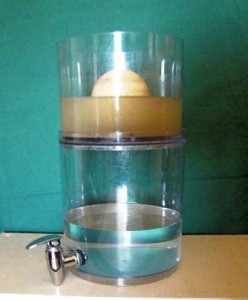 What is a ceramic water filter? The filter consists of a ceramic shell which usually contains activated carbon. The ceramic shell has sub-micron sized pores which filter out small contaminants such as bacteria and particulates while the carbon inside treats the water by removing a wide spectrum of chemicals. Specialized filters that remove particular chemicals such as fluoride or arsenic can also be manufactured by using other media in place of the carbon.
What is a ceramic water filter? The filter consists of a ceramic shell which usually contains activated carbon. The ceramic shell has sub-micron sized pores which filter out small contaminants such as bacteria and particulates while the carbon inside treats the water by removing a wide spectrum of chemicals. Specialized filters that remove particular chemicals such as fluoride or arsenic can also be manufactured by using other media in place of the carbon. 